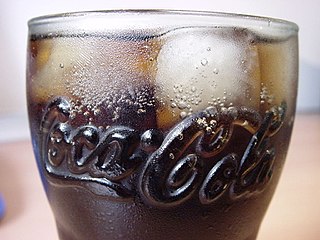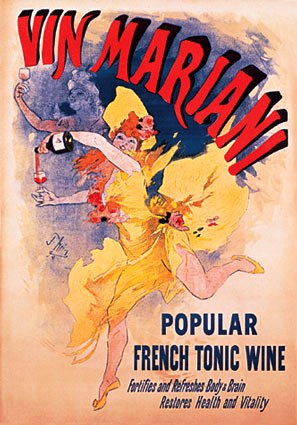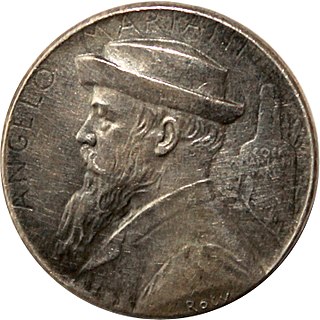
Coca-Cola, or Coke, is a carbonated soft drink manufactured by the Coca-Cola Company. In 2013, Coke products were sold in over 200 countries worldwide, with consumers drinking more than 1.8 billion company beverage servings each day. Coca-Cola ranked No. 87 in the 2018 Fortune 500 list of the largest United States corporations by total revenue. Based on Interbrand's "best global brand" study of 2020, Coca-Cola was the world's sixth most valuable brand.

Cola is a carbonated soft drink flavored with vanilla, cinnamon, citrus oils, and other flavorings. Cola became popular worldwide after the American pharmacist John Stith Pemberton invented Coca-Cola, a trademarked brand, in 1886, which was imitated by other manufacturers. Most colas originally contained caffeine from the kola nut, leading to the drink's name, though other sources have since been used. The Pemberton cola drink also contained a coca plant extract. His non-alcoholic recipe was inspired by the coca wine of pharmacist Angelo Mariani, created in 1863.

Cocaine is a tropane alkaloid that acts as a central nervous system (CNS) stimulant. As an extract, it is mainly used recreationally, and often illegally for its euphoric and rewarding effects. It is also used in medicine by Indigenous South Americans for various purposes and rarely, but more formally as a local anaesthetic by medical practitioners in more developed countries. It is primarily obtained from the leaves of two Coca species native to South America; Erythroxylum coca and E. novogranatense. After extraction from the plant, and further processing into cocaine hydrochloride, the drug is administered by being either snorted, applied topically to the mouth, or dissolved and injected into a vein. It can also then be turned into free base form, in which it can be heated until sublimated and then the vapours can be inhaled.

John Stith Pemberton was an American pharmacist and Confederate States Army veteran who is best known as the inventor of Coca-Cola. In May 1886, he developed an early version of a beverage that would later become Coca-Cola, but sold his rights to the drink shortly before his death in 1888.

The kola nut is the seed of certain species of plant of the genus Cola, placed formerly in the cocoa family Sterculiaceae and now usually subsumed in the mallow family Malvaceae. These cola species are trees native to the tropical rainforests of Africa. Their caffeine-containing seeds are about 5 centimetres (2.0 in) across and are used as flavoring ingredients in beverages applied to various carbonated soft drinks, from which the name cola originates.

Pemberton's French Wine Coca was a coca wine created by the druggist John Pemberton, the inventor of Coca-Cola. It was an alcoholic beverage, mixed with coca, kola nut, and damiana. The original recipe contained the ingredient cocaethylene, which was removed, just like the alcohol had before it, in 1899 because of a social stigma surrounding the rampant use of cocaine at the time.

The Coca-Cola Company's formula for Coca-Cola syrup, which bottlers combine with carbonated water to create the company's flagship cola soft drink, is a closely guarded trade secret. Company founder Asa Candler initiated the veil of secrecy that surrounds the formula in 1891 as a publicity, marketing, and intellectual property protection strategy. While several recipes, each purporting to be the authentic formula, have been published, the company maintains that the actual formula remains a secret, known only to a very few select employees.

Coca wine is an alcoholic beverage combining wine with cocaine. One popular brand was Vin Mariani, developed in 1863 by French-Corsican chemist and entrepreneur Angelo Mariani.

Buckfast Tonic Wine is a caffeinated alcoholic drink consisting of pure caffeine added to fortified wine, originally made by monks at Buckfast Abbey in Devon, England, now made under a licence granted by the monastery, and distributed by J. Chandler & Company in Great Britain, James E McCabe Ltd in Northern Ireland, and Richmond Marketing Ltd in Ireland. It is based on a traditional recipe from France. The wine's distributor reported record sales of £43.2 million as of March 2017.

The Coca-Cola Company is an American multinational corporation founded in 1892, best known as the producer of Coca-Cola. The drink industry company also manufactures, sells, and markets other non-alcoholic beverage concentrates and syrups, and alcoholic beverages. The company's stock is listed on the NYSE and is part of the DJIA and the S&P 500 and S&P 100 indexes.

Angelo Mariani or Ange-François Mariani (1838–1914) was a French chemist and entrepreneur from the island of Corsica. He was born in Pero-Casevecchie, Haute-Corse.

Coca tea, also called mate de coca, is an herbal tea (infusion) made using the raw or dried leaves of the coca plant, which is native to South America. It is made either by submerging the coca leaf or dipping a tea bag in hot water. The tea is most commonly consumed in the Andes mountain range, particularly Argentina, Bolivia, Colombia, Ecuador and especially in Peru, where it is consumed all around the country. It is greenish yellow in color and has a mild bitter flavor similar to green tea with a more organic sweetness.
Coca may refer to any of the four cultivated plants which belong to the family Erythroxylaceae.

Frank Mason Robinson was an important early marketer and advertiser of what became known as Coca-Cola.

Red Bull Simply Cola is a beverage from Red Bull GmbH, makers of the energy drink Red Bull. The cola, which contains natural flavouring and caffeine, was introduced in 2008 in several countries.

Agwa de Bolivia, often shortened to AGWA, is a herbal liqueur made with Bolivian coca leaves and 37 other natural herbs and botanicals including green tea, ginseng, and guarana, distilled and produced in Amsterdam by BABCO Europe Limited. The coca leaf content of the drink, like that in Coca-Cola, has the cocaine alkaloids removed during production, and does not contain the drug.
Sedna was an alcoholic beverage made in Belfast, Ireland, and sold as a "tonic". In its earlier days it was made from port wine with the addition of extracts of coca leaf, kola nut and beef. From around 1923 its only advertised additive was the kola extract. The brand name was later used in Australia for a similar product, locally produced.



















